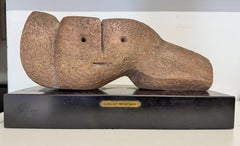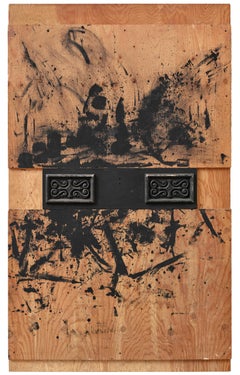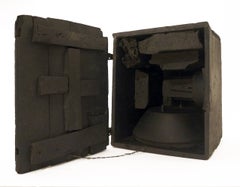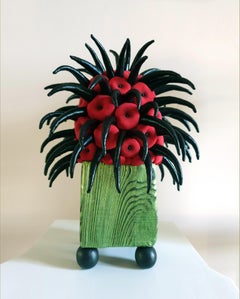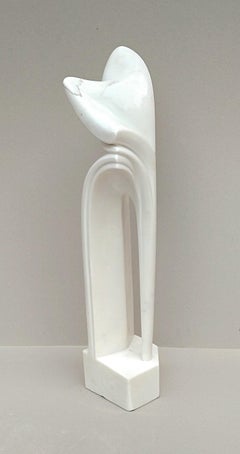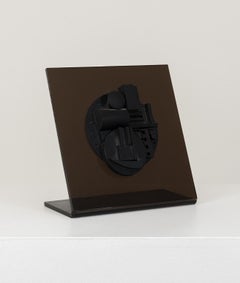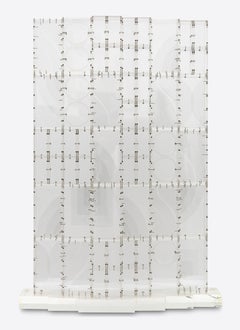Louise Nevelson Sculptures
Louise Nevelson was one of the leading American female sculptors of the 20th century, and she did it on her own terms. She was a pioneer of installation art and created large-scale monochromatic sculptures that are today known for their provocative, compartmentalized forms. While her assemblages involved a range of materials, she is best known for her wooden sculptures. Working in a single color was her signature, and all-encompassing color demanded an all-encompassing focus for this artist — she even kept separate studios for work in black, white and gold.
Nevelson was born in what is now Ukraine in 1899 and emigrated to the United States with her family in 1905. She moved to New York City as a young woman in 1920 to study at the Art Students League. In the 1930s, Nevelson traveled around Europe, came into contact with the works of Picasso, studied with Hans Hofmann and assisted Diego Rivera in New York City.
Nevelson had her first solo show in 1941 at the Nierendorf Gallery in New York. In the late 1940s, she studied with Stanley William Hayter and worked as a ceramicist in the workshop of revered furniture designer Vladimir Kagan, who let her take scraps from the factory to use in her sculptures. (As a child, Nevelson had also worked with discarded wood from her father's lumber yard.)
By the early 1950s, Nevelson had traveled to Guatemala and Mexico. She was inspired by pre-Columbian art and the totemic works of ancient cultures. Nevelson began creating the first of her iconic wood sculptures and later participated in the legendary “Sixteen Americans” exhibition at the Museum of Modern Art. Her work was acquired by prominent institutions in the years that followed.
Nevelson made reliefs in shadow boxes and was for a time affiliated with New York City’s Sidney Janis Gallery as its first female Abstract Expressionist artist (her work was abstract but she also drew on the Cubist and Constructivist movements). In the early 1960s, Nevelson showed her art in Chicago, Manhattan, Paris and West Germany. It was around this time that she exhibited at Pace Gallery in Boston and New York. The gallery represented her for the duration of her career.
Nevelson died in 1988, but her legacy is immense. Her work is held in virtually every major American art museum, including the Museum of Modern Art, the Metropolitan Museum of Art, the Los Angeles County Museum of Art and the National Gallery of Art. Her permanent large-scale public sculptures are installed all over the country, including in Louise Nevelson Plaza in New York City's Financial District.
On 1stDibs, find original Louise Nevelson sculptures, prints and drawings.
1940s American Modern Louise Nevelson Sculptures
Cast Stone
1940s American Modern Louise Nevelson Sculptures
Cast Stone
20th Century Abstract Expressionist Louise Nevelson Sculptures
Wood
1970s American Modern Louise Nevelson Sculptures
Wood
2010s Abstract Expressionist Louise Nevelson Sculptures
Textile, Wood, Acrylic
2010s Modern Louise Nevelson Sculptures
Marble
1970s Modern Louise Nevelson Sculptures
Bronze
2010s Contemporary Louise Nevelson Sculptures
Concrete
Late 20th Century American Modern Louise Nevelson Sculptures
Bronze
1970s Abstract Expressionist Louise Nevelson Sculptures
Walnut
1970s American Modern Louise Nevelson Sculptures
Metal
Late 20th Century American Modern Louise Nevelson Sculptures
Bronze
1970s Modern Louise Nevelson Sculptures
Sandstone
1980s Abstract Expressionist Louise Nevelson Sculptures
Stainless Steel
Mid-20th Century American Modern Louise Nevelson Sculptures
Steel
1950s Abstract Expressionist Louise Nevelson Sculptures
Wood, Oil
1970s Abstract Louise Nevelson Sculptures
Wood
20th Century Post-War Louise Nevelson Sculptures
Metal
1970s Abstract Louise Nevelson Sculptures
Wood, Paint
1970s Abstract Louise Nevelson Sculptures
Wood, Paint
1960s Abstract Louise Nevelson Sculptures
Resin
1970s Abstract Expressionist Louise Nevelson Sculptures
Wood
20th Century Louise Nevelson Sculptures
Wood
Louise NevelsonLouise Nevelson - Winter Chord - Hand-Signed Black Painted Wood Sculpture, 1974, 1974
1970s Abstract Expressionist Louise Nevelson Sculptures
Wood, Acrylic
1960s Abstract Louise Nevelson Sculptures
Resin
1980s Modern Louise Nevelson Sculptures
Wood, Paint
Mid-20th Century Post-War Louise Nevelson Sculptures
Wood, Mixed Media
1970s Abstract Louise Nevelson Sculptures
Wood
Louise Nevelson sculptures for sale on 1stDibs.
Artists Similar to Louise Nevelson
- 1stDibs ExpertMarch 22, 2022Some of Louise Nevelson's sculptures were called environments. These collage-like walls consisted of wooden boxes filled with found objects. Some of her most famous environments include the Black Wall from 1959 and The Great Wall from 1970. Find a selection of Louise Nevelson art on 1stDibs.
- 1stDibs ExpertApril 5, 2022Louise Nevelson used found wooden forms and made sculptures in steel, aluminum, plexiglass and other materials. Her artistic journey often featured wood, as she found it fascinating, but she added plastics and formica in the 1960s. In the 1970s she began to work on a gigantic scale with aluminum and steel. Shop a selection of Louise Nevelson pieces from some of the world’s top art dealers on 1stDibs.
- 1stDibs ExpertApril 5, 2022Louise Nevelson is best known for her work creating wooden structures and sculptures. However, she also explored using plexiglass, aluminum and steel in her art. Her work is considered fundamental to the history of Feminist art and has challenged the stereotype of the male sculptor, solidifying her place in art history. Shop a selection of Louise Nevelson pieces from some of the world’s top art dealers on 1stDibs.

